Our continuous drive for growth and consumption took a heavy toll on our planet. But, the damage is not irreversible yet. Almost all industries are trying to embrace eco-friendly measures to save our beloved earth, and the fashion industry is no exception. One such step towards sustainable innovation in the fashion world is bamboo fabric.
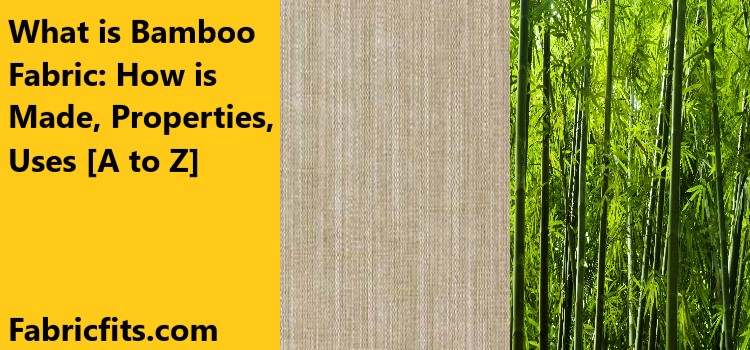
So what is bamboo material? bamboo fabric is a fabric that has been made using bamboo. Since bamboo is a natural ingredient, the bamboo fabric is 100% biodegradable. We have been making textiles from bamboo for more than a century, but not until recently did we manage to perfect the craft.
Why should you use bamboo fabric? Is it a viable substitute for the less eco-friendly alternatives out there? Do you have to compromise on quality and comfort for the sake of the world? We will try to give you a complete rundown of bamboo fabrics in this article.
So, let’s find out what is it, how is made, and how bamboo it can change the world in fashion and beyond.
Table of Contents
- What is Bamboo Fabric?
- What is Bamboo Cloth Made of?
- How is Bamboo Fabric Made?
- Bamboo Fabric Properties
- How is Bamboo Fabric Used for?
- Bamboo Fabric Manufacturers
- Where to Buy Bamboo Fabric from?
- Is Bamboo Fabric Sustainable?
- Is Bamboo Fabric Breathable?
- Is Bamboo Fabric Toxic?
- Is Bamboo Fabric Durable?
- Is Bamboo Fabric Soft?
- What are The Advantages of Bamboo Fabric?
- Disadvantages of Bamboo Fabric
- How to Clean and Care Bamboo Fabric?
- Final Words
What is Bamboo Fabric?
Bamboo fabric is an environmentally sustainable type of textile that comes from bamboo pulps. It has a lot to offer besides the sustainability factor.
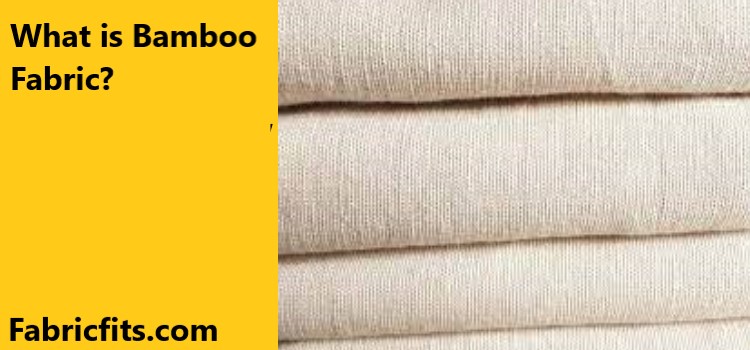
Bamboo fabric has a premium soft texture and antibacterial properties. Bamboo cloth has become more of a mainstream choice since the mid-2000s. We now see many designers using the material in their collections.
What is Bamboo Cloth Made of?
Bamboo fabric is made of bamboo fibers. No surprise there, huh? Bamboo fibers are basically cellulose fibers that you can extract from natural bamboo.
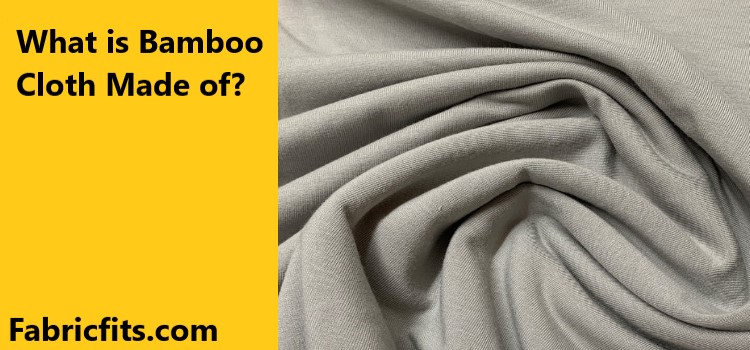
Manufacturers take these cellulose fibers from the bamboo and synthesize them into rayon. Unspun bamboo fibers look like balls of cotton, only lighter and fluffier.
How is Bamboo Fabric Made?
There are two ways to get fiber from bamboo; chemical production and mechanical production. The significant difference between these two modes of operation is in the use of chemicals.
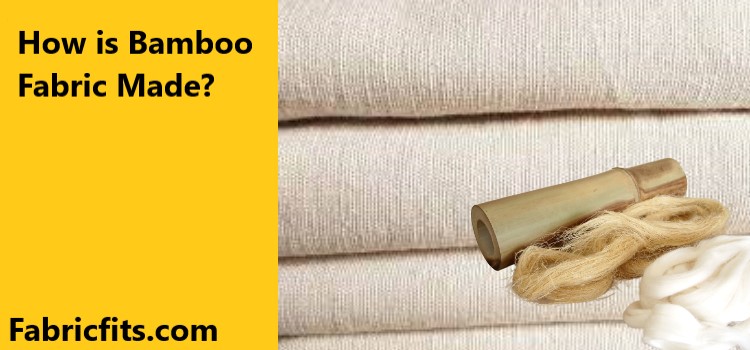
The former is chemical intensive, and the latter uses solvents or natural enzymes. Let’s elaborate so that you get a better understanding of how these two methods differ from each other.
Chemical Production
The chemical production of bamboo is not a singular process either. We can classify it into two subcategories; the viscose rayon manufacturing method and the lyocell, aka closed loop method. The lyocell method is the greener approach between these two procedures since it involves no use of toxic materials.
Viscose Rayon Manufacturing Method
The first stage is collecting the raw materials; in this case, bamboo strips, and stalks, are taken from mature bamboo. This step must be done carefully to avoid any contamination. Then the pulp is made from the bamboo strips by crushing them using pressure and heat. After that, it’s time to immerse the pulp in several chemicals to extract the cellulose from it.
Carbon disulfide, sulphuric acid, and caustic soda are some of the chemicals manufacturers use at this stage. Technicians describe this phase of production as ‘’water retting’’. Once that is done, the material is passed through a hot mechanical spinneret to turn cellulose into strands of fiber. Now, you have silk-like bamboo viscose fabric.
Lyocell or Closed Loop Production
In this method, the cellulose structure is not altered with harmful chemicals. Instead, nontoxic solvents are used for processing. Lyocell bamboo fibers are made by spinning the strands with this solvent in a closed loop. As a result, bamboo lyocell fabrics made from these fibers are organic and biodegradable.
Though both bamboo fabric variants (viscose and lyocell) produce cellulose waste, lyocell fabrics are comparatively more eco-friendly than bamboo viscose. Because the solvents used to create the bamboo lyocell in the closed-loop method are nontoxic and can be recycled for future use.
Mechanical Process
If you go with the mechanical process of bamboo fabric production, you don’t have to extract cellulose from bamboo pulp to make the fabric. And because of that, you don’t have to use any chemicals to condition the pulp. You will be using natural enzymes on broken bamboo wood fiber. So, the environmental impact will be minimal.
Fibers produced in this process are called “bamboo linen” and are comparatively softer than other bamboo fiber variants. Though the mechanical method is environmentally sustainable, economically, it’s not.
This process is costly and time-consuming. So, bamboo linens are expensive. Only a handful of high-end clothing brands use this fabric to design their products.
Bamboo Fabric Properties
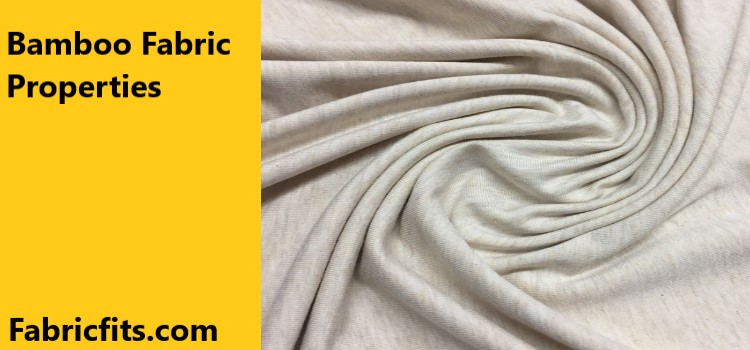
Soft
Bamboo fabric is one of the softest fabrics in the world. We often think of silk when talking about soft fabrics, but once you put on an outfit made of bamboo fabric, you will realize that it is even softer. You can compare the softness with cashmere, a much more expensive fabric than silk.
Hypoallergenic & Anti-Bacterial
Bamboo Kun is a miraculous bio-agent that keeps bamboo safe from harmful insects, bacteria, and pathogens. You can naturally find it in bamboo. Since bamboo fabric comes from bamboo, it also comes with the healing powers of bamboo Kun. Wearing bamboo cloth can help prevent skin irritation from pollution, sun, bacteria, and other harmful factors.
Breathable
Bamboo, unlike many other materials, allows a lot of air to pass through. Fabrics made from the bamboo plant retain the plant’s natural ability to regulate its temperature. There are micro-gaps all over the cross-section of the bamboo fiber, which helps the fabric absorb and release moisture and keep it cool and dry.
UV Protection
Bamboo fiber also has a unique ability to block the harmful ultraviolet rays coming from the sun. As we know, long-term exposure to UV rays can have potentially life-threatening ramifications; we must exercise proper caution while going out in the sun. The bamboo cloth on your body can block as much as 98% of UV rays getting into your body.
Washable
You can wash and dry bamboo cloth like any other clothes. Clothes made from bamboo last longer if you wash them on a gentle cycle in cold or lukewarm water and dry them on the line. However, bamboo fabrics don’t fare well when you put them into the dryer. Avoid exposing them to high heat. Always iron them on low heat.
Read Next: What is a lawn cloth fabric
How is Bamboo Fabric Used for?
The use of bamboo fabrics is not limited to making fashionwear. Because of their versatile nature, bamboo fabrics are also used to produce interior décor items and even medical uniforms.
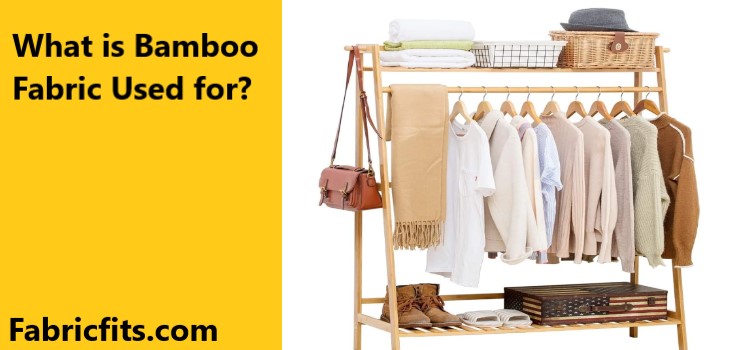
Use of Bamboo Fabric in The Fashion & Textile Industry
- Bamboo fabrics can be used to make apparel, shoes, and other fashion accessories like most other fabrics.
- Bamboo linen is comparatively expensive but highly durable and comfortable to wear. It is widely used by luxury brands.
- Bamboo is a fantastic material for making innerwear since it’s highly breathable and soft.
- Because of its anti-UV properties, softness, and high absorbency, bamboo fabric is used to make apparel for babies and pregnant women.
Use of Bamboo Fabric in Interior Décor & Domestic Products
- Bamboo is used for making different home textiles, including blankets, bed sheets, mattresses, towels, etc.
- Bamboo viscose is used in homeware, furniture, upholstery, carpets, bathrobes, drapes, curtains, etc.
- Bamboo-made decorative products are in high demand. These products can give any home a bohemian and minimalistic touch.
- Because of its biodegradability and durability, bamboo fabrics are slowly replacing single-use products like napkins and tissues.
Use of Bamboo Fabric in The Medical Sector
For inhibiting bacterial development, surgical wear manufactured from nonwoven 100% bamboo fiber is an excellent choice.
The high absorbent quality of this fabric makes it an excellent choice for producing sanitary napkins, gauges, diapers, surgical gowns, and masks.
Bamboo Fabric Manufacturers
Bamboo has an almost worldwide presence. It grows fast and has high resistance to adversities. So, many countries have it high in supply. But not all of them managed to take advantage of it to build a thriving bamboo fabric industry. China, India, Pakistan, and Indonesia are the leading manufacturers of bamboo fabric in the world.
Where to Buy Bamboo Fabric from?
Designers like Kate O Connor, Oscar de la Renta, and Diane von Furstenberg have used bamboo fabric for their designs. You can buy bamboo-made clothes from their stores and many other designers.
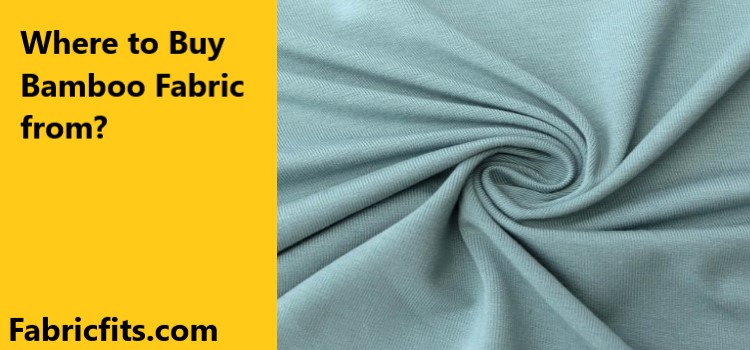
If you are looking for raw bamboo fabric, Amazon and Etsy can be pretty good options. You can also find some other excellent retailers if you do a bit of research.
Is Bamboo Fabric Sustainable?
To answer this question, we must consider three things,
Is the raw material of this fabric sustainable?
Bamboo, the raw material of the bamboo fabric, is sustainable because it is organically cultivated and needs almost no fertilizer, pesticides, extra labor, or water.
Is the manufacturing process sustainable?
Among all the processes of bamboo fabric production, the Mechanical process is the most sustainable. It doesn’t create any cellulose or chemical waste.
Viscose and the closed-loop process are not entirely beneficial for the environment. Among these two, the close loop process is less harmful.
Because this only creates cellulose waste and does not cause any chemical contamination. But viscose endangers the environment as well as the workers with chemicals.
Is bamboo fabric itself eco-friendly?
Compared to other common fabrics, bamboo is more eco-friendly since it is highly biodegradable and compostable. Bamboo viscose only scores 55.61 points on the Higg Materials Sustainability Index (MSI) for its impact on the environment, while regular cotton scores 101.9 points.
So, we can say that bamboo linen and bamboo lyocell are sustainable compared to bamboo viscose. And all variants of bamboo fabric are better than other plant-based fabrics in terms of sustainability.
Is Bamboo Fabric Breathable?
Bamboo has microscopic gaps and pores in the cross-section of bamboo fibers. So, they have higher breathability than other fabrics.
Is Bamboo Fabric Toxic?
Bamboo doesn’t contain any toxic elements. Chemicals are only used during the production stages of some bamboo fabrics. However, the fabric itself is nontoxic and washed several times after processing.
Is Bamboo Fabric Durable?
It is incredibly durable. It holds up better even after several washes and is less likely to fray.
However, bamboo fabrics made by the mechanical process tend to be more long-lasting than the ones made by the chemical process. That said, all types of bamboo fabrics are highly durable for daily use.
Is Bamboo Fabric Soft?
Bamboo fiber’s smooth, rounded structure gives it a silky soft feel. It causes zero irritation to the skin. So, clothes made of bamboo fabric are one of the softest ones you will wear. Bamboo bed sheets can be incredibly comfy for their softness and breathability.
What are The Advantages of Bamboo Fabric?
- Comfortable To Wear: It’s a comfortable fabric that even babies can wear.
- Hypoallergenic: It doesn’t cause any allergic reaction.
- Antimicrobial: Pure, nonwoven bamboo fabrics are antimicrobial.
- Highly Absorbent And Temperature Regulating: It absorbs sweat quickly and releases it into the environment. Also, it keeps the body cool during summer and warm during winter.
- Anti-Static: It is inherently anti-static. Bamboo fibers make a Faraday Cage around your body and keep the fabric from clinging to your skin.
- UV Protection: It has anti-UV qualities.
- Biodegradable: This fabric is biodegradable. This process doesn’t take more than a year.
Disadvantages of Bamboo Fabric
- Prone to Shrinkage: Bamboo can shrink after a couple of washes.
- Tends to Bobble: With time, tiny fiber balls can form on bamboo. It is called bobbling or pilling.
- Costly: Sustainable and pure bamboo fabrics such as bamboo linen are costly compared to other plant-based fabrics.
How to Clean and Care Bamboo Fabric?
First, look for the instructions attached to the product. All the steps for cleaning it should be mentioned there. In general, the following steps should be considered:
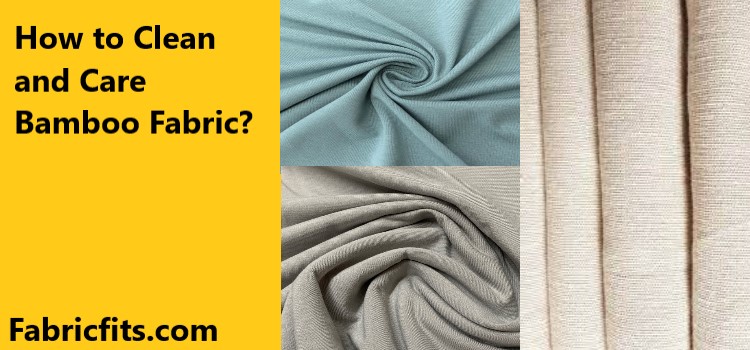
Washing and Drying:
Machine washes: Bamboo can be machine cleaned and dried. But it is advised to set the machine in a gentle, cool wash and the temperature below 104 degrees Fahrenheit.
The tumbling speed of the machine should be set below 600 revolutions per minute. Because bamboo can get damaged in extremely high temperatures and tumbling speed.
Hand washes: Use lukewarm or cold water. Hang on a wire or hanger to dry.
Detergent: Avoid using detergents that are chlorine-based or strong.
Ironing: Bamboo doesn’t wrinkle easily. But if needed, use the iron on low heat and avoid steaming.
Final Words
As we try to build a more sustainable future, we can say for sure that bamboo fabrics will continue their upward surge in popularity. You can play your part in saving the planet by opting for an eco-friendly fashion choice like bamboo.

Hi Robert
I am trying to find the thermal properties of bamboo fabric, like you I am an engineer (mechanical !) so like numbers. Do you have any idea where I can get properties such as Clo, wicking, tensile strength etc
Thanks